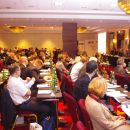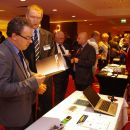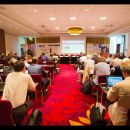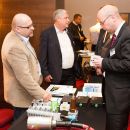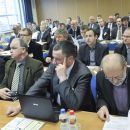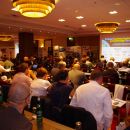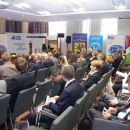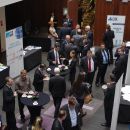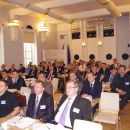| Article Index |
|---|
| Start |
| Previous editions |
| Partners |

Ferry Cserèp, VI Smart Communications and Technology Forum: "In the majority of countries regulations are always too late - technology pushes boundries, enforcing development."
The debate about smart grid/metering in Poland has been going on for years now. Poland is among 16 European countries currently heavily engaged in a large scale, nationwide "smart metering" infrastructure implementation by 2020 (Austria, Sweden, Denmark, Estonia, Romania, Finland, Greece, Spain, Ireland, Luxembourg, Malta, the Netherlands, Poland, Italy and Great Britain) - all of them at different stages of completion:
- Swedish energy sector is operating completely on "smart" solutions since 2010.
- In the British energy industry large scale installation of "smart" meters has began in 2013 and is a continuous process. They estimate to have 53 million of "smart" meters in place by 2019.
- French Regulatory Authority has issued a projection that by the end of this year - 2016 they will have "smart" meters installed and operational in every household nationwide.
- In Italy there were 33,5 million "smart" meters by 2010 (90% of all energy consumers nationwide)
- In Germany, on the other hand, government refuses to install "smart" meters in old housing, and requires installation of this technology only in new construction investments that can ensure certain degree of energy effectiveness.
According to the energy policy in Poland and country's obligations towards EU, at least 80% of energy consumers must have access to "smart" meters by 2020. This is a challenge both technologically and commercially. Presently, three mayor Polish DSOs are engaged in "smart metering" infrastructure implementation:
- ENERGA Operator in the northern and western part of the country, with over 800 thousand AMI meters in PLC technology,
- RWE Stoen in the central part of the country - with over 100 thousand AMI meters installed.
- TAURON in the southern Poland - with over 330 thousand "smart" meters to be operational by 2017. They are also engaged in the Smart Cities project, in cities like Wroclaw. The project allows the consumer to coordinate and control the utility and media consumption, and provides energy distribution operators with more reliable and precise data about the grid. New meters are compatible with all standard household equipment, and the consumption rate can be monitored using just an internet browser or a mobile device, like smartphone.
Despite a number of "smart" projects taking place, the situation is certainly not easy. We still do not have clearly defined regulations and legislative policies, which makes potential investors hesitant about engaging themselves in "smart" solutions in Poland. There is a significant potential in Poland for this type of investments, however, there are still certain barriers and limitations in the legal system regarding the energy sector that impede development - this was one of the prevailing conclusions of the 6th edition of Smart Communications and Technology Forum, held on 16th June 2016 in Warsaw.
The Smart Communications and Technology Forum is an annual event taking place in Poland, dedicated to the subject of smart grids and smart metering. It has gradually evolved from a mostly local conference focused on the domestic market in Poland to an international event, possibly one of the biggest in the region. It is certainly one that makes participation worthwhile. The main goal of the forum is to invite international experts on smart grid and smart metering technology and then encourage them to exchange and share their knowledge and experience. Each year we are honored to host an event with all the mayor representatives of the market including experts on energy and natural gas markets, representatives of the public sector and administration, scientists, engineers, technology developers, financial institutions as well as government officials. We had over 150 experts joining us for this year's edition of the event.
Regulatory Perspective of SG and SM development in Poland.
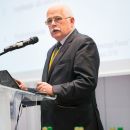 Dr Tomasz Kowalak during his presentation commented on the issue of New Standard Technical Specification as well as implications for the IT and Energy industry. As stated by him: ".... the direction of implementation is correct, however, its effectiveness depends heavily on strategic and political policy making, reflected in the legislative initiatives. Additionally, the Chairman of the Energy Regulatory Office (URE) must be determined to protect the balance between corporate and consumer interests in the energy sector, using tools like: tariffs policy or financial support for DSOs development strategies."
Dr Tomasz Kowalak during his presentation commented on the issue of New Standard Technical Specification as well as implications for the IT and Energy industry. As stated by him: ".... the direction of implementation is correct, however, its effectiveness depends heavily on strategic and political policy making, reflected in the legislative initiatives. Additionally, the Chairman of the Energy Regulatory Office (URE) must be determined to protect the balance between corporate and consumer interests in the energy sector, using tools like: tariffs policy or financial support for DSOs development strategies."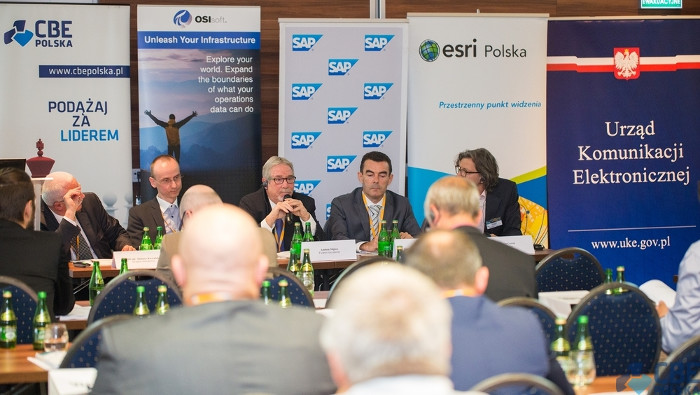
During the Discussion Panel, experts refereed to the commercial element of "smart" infrastructure installation and possible support of the process. As stated by dr Tomasz Kowalak: "The long-term calculations seem to justify investments in the AMI infrastructure, regardless of the legal ramifications, and regulatory incentives. This is one of those investments that ensures return. Regulator could only provide certain overall support of the process..."
Tomasz Piasecki commented that: "In 2009-2010 Energa developed a study to analyse technological and commercial profitability of AMI systems, and the conclusion was clear - the investment is sound and even without any additional support from government related agencies will guarantee a handsome return. Though additional support would certainly be stimulating and welcomed."
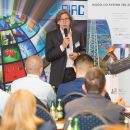 Ferry Cserèp, CEO of NETINIUM added that: "In most countries regulations are always behind technology - technology pushes boundaries, enforcing development."
Ferry Cserèp, CEO of NETINIUM added that: "In most countries regulations are always behind technology - technology pushes boundaries, enforcing development."Exactly for that reason, the Regulatory Administration in the Netherlands has temporarily limited and minimized a number of crucial regulations to create a friendly environment for companies to test and pilot new technologies, and verify their effectiveness.
The limitation of energy loss on the grid and the installation of balancing meters in electrical substations.
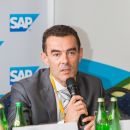 Rafał Świstak, an expert from PTPiREE (Polish Association of Transmission and Distribution of Electric Energy), discussed recent installation of balancing meters in electrical substations MV/LV. He predicted that: "their utilization in the grid will balance the LV power substations. Data gathered, concentrated and made accessible by the meters might improve operational efficiency of DSOs. The biggest advantage, however, is the ability to monitor grid workload, which will significantly increase the level of grid safety.(...) Data provided by by these meters will decrease the loss of energy and the risk of grid equipment theft. Furthermore, the Energy Regulatory Office will also benefit from the data provided by the meters by quality evaluation of energy delivered to consumers". It is worth mentioning, that PTPiREE supports four Polish DSOs (TAURON, PGE, ENEA and RWE Stoen) in their attempt to purchase even more balancing meters and implement them in Polish energy grid.
Rafał Świstak, an expert from PTPiREE (Polish Association of Transmission and Distribution of Electric Energy), discussed recent installation of balancing meters in electrical substations MV/LV. He predicted that: "their utilization in the grid will balance the LV power substations. Data gathered, concentrated and made accessible by the meters might improve operational efficiency of DSOs. The biggest advantage, however, is the ability to monitor grid workload, which will significantly increase the level of grid safety.(...) Data provided by by these meters will decrease the loss of energy and the risk of grid equipment theft. Furthermore, the Energy Regulatory Office will also benefit from the data provided by the meters by quality evaluation of energy delivered to consumers". It is worth mentioning, that PTPiREE supports four Polish DSOs (TAURON, PGE, ENEA and RWE Stoen) in their attempt to purchase even more balancing meters and implement them in Polish energy grid.Implementation of "smart" meters
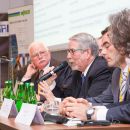 In reference to the role of the government and regulatory agencies in the application of "smart grid" and "smart metering" - Rafał Świstak focused on the necessity of cohesive and clear legal ramification that will allow DSOs to create and execute large scale lasting implementation strategies. He also presented the information on the current state of "smart meters" infrastructure installation by DSOs that are associated in PTPiREE. By the end of 2016 it is estimated that 1,5 million "smart" meters will be installed nationwide, which means almost 10% of all the households in the country will be within the "smart metering" infrastructure.
In reference to the role of the government and regulatory agencies in the application of "smart grid" and "smart metering" - Rafał Świstak focused on the necessity of cohesive and clear legal ramification that will allow DSOs to create and execute large scale lasting implementation strategies. He also presented the information on the current state of "smart meters" infrastructure installation by DSOs that are associated in PTPiREE. By the end of 2016 it is estimated that 1,5 million "smart" meters will be installed nationwide, which means almost 10% of all the households in the country will be within the "smart metering" infrastructure.During the Panel Debate, experts also discussed the topic of utilization of renewable sources of energy in the grid and the issue of reduction of CO2 emissions.
Dr Amnon Shpira - former Chairman of the Israeli Electricity Market Regulatory Authority (ERO) assessed that the energy grid must be more flexible, capable of utilizing more diverse renewable energy sources. Furthermore, due to the depletion of natural energy sources, the necessity of energy loss reduction throughout production, transmission and distribution, and the current state of natural environment (reduction of CO2 emissions), it is essential to push for implementation of the "smart" distribution technologies and grid control.
Communication and interoperability in Smart Grid
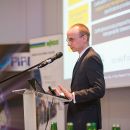 "Main challenge when implementing 'smart' solutions is ensuring interoperability and accessibility. Therefore, it is crucial that the technology involved in the process is fully verified, low-cost and innovative." - as stated in his initial words by Tomasz Piasecki, IT Achitect, AMI Project in ENERGA Operator, Board Member of the PRIME Alliance. In his presentation, he referred to the need of interchangeability of certain devices, that are essential elements of the "smart grid". Mr. Piasecki represents international association charged with promoting and providing open communications standard in "smart" networks - PRIME Alliance (PRIME = PoweRline Intelligent Metering Evolution), the organization has 65 + active members focused on the creation and deployment of an open and comprehensive standard, enabling end-to-end communication solutions for advanced metering, grid control and asset monitoring in medium/low voltage and in-home networks. The mission of the Alliance is to accelerate the demand for products and services based on the worldwide standard and promote the broad adoption and use of the specification while supporting multi-vendor interoperability and compatibility with the global standard. Tomasz Piasecki added also: "Standard Prime 1.4 as a communication technology fulfills market needs. It is an open standard, offering interoperability in real time. It is crucial to remember that this specification is not exclusively for "smart" meters, but can be used also in a much broader way."
"Main challenge when implementing 'smart' solutions is ensuring interoperability and accessibility. Therefore, it is crucial that the technology involved in the process is fully verified, low-cost and innovative." - as stated in his initial words by Tomasz Piasecki, IT Achitect, AMI Project in ENERGA Operator, Board Member of the PRIME Alliance. In his presentation, he referred to the need of interchangeability of certain devices, that are essential elements of the "smart grid". Mr. Piasecki represents international association charged with promoting and providing open communications standard in "smart" networks - PRIME Alliance (PRIME = PoweRline Intelligent Metering Evolution), the organization has 65 + active members focused on the creation and deployment of an open and comprehensive standard, enabling end-to-end communication solutions for advanced metering, grid control and asset monitoring in medium/low voltage and in-home networks. The mission of the Alliance is to accelerate the demand for products and services based on the worldwide standard and promote the broad adoption and use of the specification while supporting multi-vendor interoperability and compatibility with the global standard. Tomasz Piasecki added also: "Standard Prime 1.4 as a communication technology fulfills market needs. It is an open standard, offering interoperability in real time. It is crucial to remember that this specification is not exclusively for "smart" meters, but can be used also in a much broader way."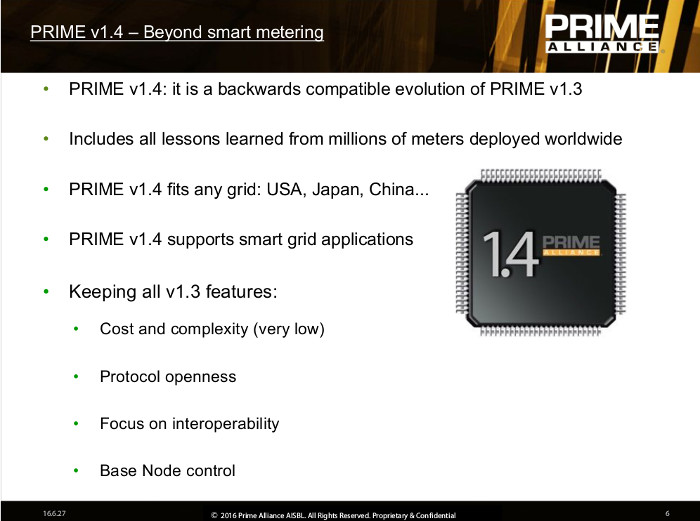
Case study: Smart Meters for a Multi-Utility (Belgia)
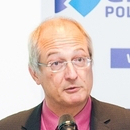 One of the Forum's crucial elements was the presentation of large-scale Belgian project eMUCS (the extended Multi-Utility Companion Specifications) by Dirk Costrop, Project Lead Engineering Smart Metering, EANDIS, Belgium. It was a result of cooperation by four Belgian DSOs (Eandis, Infrax, Sibelga i Resa). The project covers 70% of all energy end users in Belgium (2,7 million natural gas and 1,4 million electric energy consumers) and its objective is to create an efficient and fully functional multi-utility platform. As asserted by Mr. Costrop: "(...) the "smart" metering infrastructure must be efficient, reliable, operating in different configurations with different meter types (electricity, gas, water, heat), they have to be interoperable, not limited to only one vendor or technology developer. It has to be compatible, accessible in case of future developments, easy to install and secure."
One of the Forum's crucial elements was the presentation of large-scale Belgian project eMUCS (the extended Multi-Utility Companion Specifications) by Dirk Costrop, Project Lead Engineering Smart Metering, EANDIS, Belgium. It was a result of cooperation by four Belgian DSOs (Eandis, Infrax, Sibelga i Resa). The project covers 70% of all energy end users in Belgium (2,7 million natural gas and 1,4 million electric energy consumers) and its objective is to create an efficient and fully functional multi-utility platform. As asserted by Mr. Costrop: "(...) the "smart" metering infrastructure must be efficient, reliable, operating in different configurations with different meter types (electricity, gas, water, heat), they have to be interoperable, not limited to only one vendor or technology developer. It has to be compatible, accessible in case of future developments, easy to install and secure."Additionally: "If you want a perfectly functional system: firstly, you need to define the end-game purpose - how will they be used, and secondly, choose carefully the proper standardization specification that will accomplish that purpose. For example, in case of dense population area, PLC might be the technology of choice, whereas in rural, small population area - GPRS or LTE might be a better option as a communication technology."
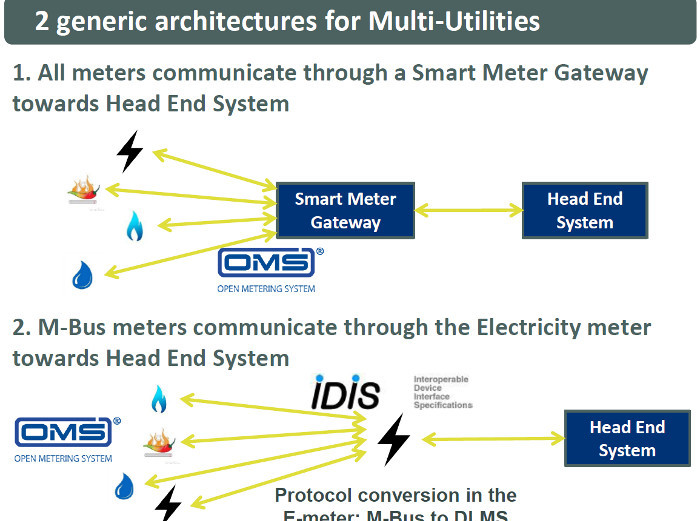

Lessons learned in "smart" meter management in the Netherlands - cooperation of NETINIUM and system operator Alliander (DSO)
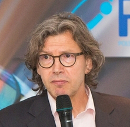 The follow up presentation by Ferry Cserèp, CEO of NETINIUM, was an ideal complementation of the preceding presentation. NETINIUM as a company delivers one of the most flexible, powerful and robust meter management platform in the European market. It helps to easily deploy, monitor, and manage devices from different brands and create a single, hybrid network of interoperable smart meters. Currently, they are engaged in projects in Central Europe, Middle East and Africa.
The follow up presentation by Ferry Cserèp, CEO of NETINIUM, was an ideal complementation of the preceding presentation. NETINIUM as a company delivers one of the most flexible, powerful and robust meter management platform in the European market. It helps to easily deploy, monitor, and manage devices from different brands and create a single, hybrid network of interoperable smart meters. Currently, they are engaged in projects in Central Europe, Middle East and Africa.Ferry Cserèp in the beginning of his speech described the effects of 20 years of cooperation between NETINIUM and Alliander (one of the DSOs in the Netherlands), defining the challenges and benefits of "smart" technology implementation: With utilities, managing change is always a challenge. (…) When it comes to meter hardware, one needs to be able to accommodate ever evolving standards and communication technologies. Because the reality is that the industry will keep updating and constantly improving its technologies. (…) The crucial question is, how do you make sure your IT infrastructure is capable of accommodating this reality without losing out on your ability to efficiently manage different meter installations. Being able to ensure a reliable grid and, in the end, guarantee a constant flow of energy to your customers." - as stated by Mr. Cserèp.
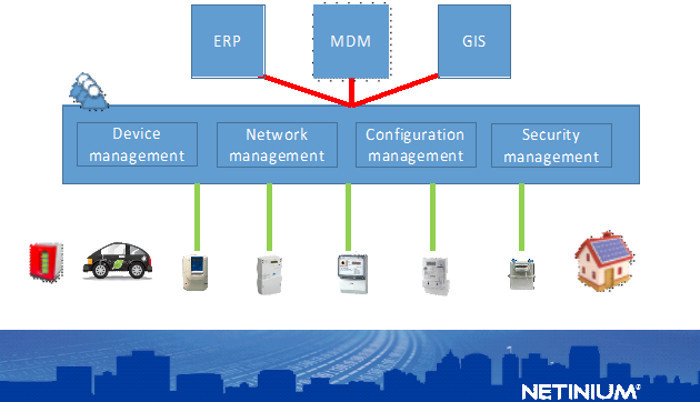

Case study: ESTFEED Platform (Estonia) - the development of technology optimizing the utility usage, including electricity - ELERING AS
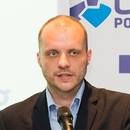 Case study from Estonia was presented by Kalle Kukk, Strategy Manager in ELERING AS, which is the Estonian national transmission system operator for both electricity and gas. ESTFEED is a data sharing platform that allows network companies, energy producers and consumers to interact more efficiently, make data collection understandable and usable for consumers. ESTFEED is a result of collaboration between: district heating operator VKG Soojus, ICT major Ericsson, Elering, Estonian Renewable Energy Association and major DSO Elektrilevi. First phase of the project was co-financed by Norway Grants. Kalle Kukk, in his presentation, referred to the issue of utilizing DMP (Data Management Platforms) - systems that encourage wider integration of communication technologies within the energy grid: "ESTFEED platform brings together data sources and applications. Data sources range from electricity, gas and district heating smart meter readings to weather forcasts and energy price prognosis. Through interpretation and collection of data all parties can create useful applications for themselves or their customers. ESTFEED will also be compatible with other public service/government systems." - as stated by Mr. Kukk.
Case study from Estonia was presented by Kalle Kukk, Strategy Manager in ELERING AS, which is the Estonian national transmission system operator for both electricity and gas. ESTFEED is a data sharing platform that allows network companies, energy producers and consumers to interact more efficiently, make data collection understandable and usable for consumers. ESTFEED is a result of collaboration between: district heating operator VKG Soojus, ICT major Ericsson, Elering, Estonian Renewable Energy Association and major DSO Elektrilevi. First phase of the project was co-financed by Norway Grants. Kalle Kukk, in his presentation, referred to the issue of utilizing DMP (Data Management Platforms) - systems that encourage wider integration of communication technologies within the energy grid: "ESTFEED platform brings together data sources and applications. Data sources range from electricity, gas and district heating smart meter readings to weather forcasts and energy price prognosis. Through interpretation and collection of data all parties can create useful applications for themselves or their customers. ESTFEED will also be compatible with other public service/government systems." - as stated by Mr. Kukk.In conclusion of his presentation, Mr. Kukk expressed hope that if successful the ESTFEED Platform will be capable of unifying many Estonian energy related databases and systems, making them accessible through single platform.
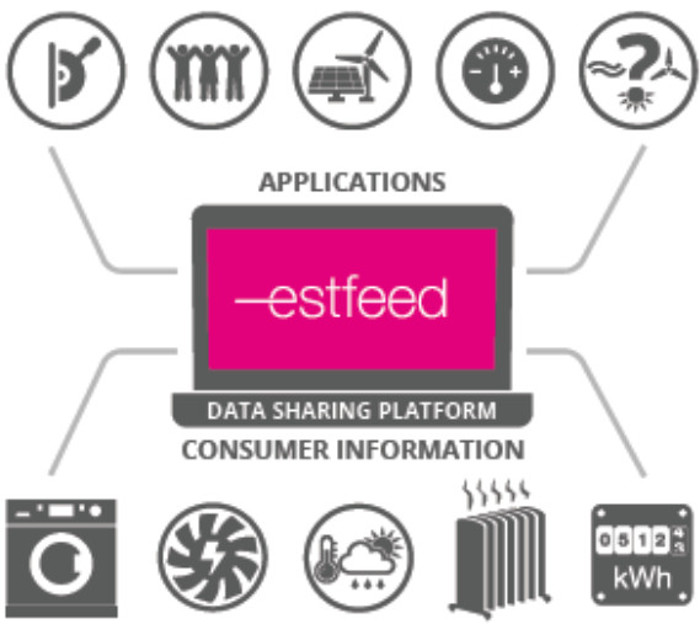

Virtual Power Plant project in Częstochowa, Poland.
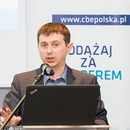 The next case study presentation was the Virtual Power Plant pilot project by Electrical Engineering Department, in Czestochowa University of Technology. The Speaker Piotr Szeląg, D.Sc. - lead manager of the project - explained in his initial words that the main objectives and underlying purpose of the enterprise, was to decrease University's energy consumption level. Presently, the goal for the future is to utilize the renewable energy sources through the installation of energy storage facility and project's optimization process through the implementation of custom-designed software platform. This project is a result of collaboration between the Czestochowa University of Technology and companies: OSIsoft (data management technology provider), Connectpoint (information systems integrator) and Emu (energy storage provider in the Aqueous Hybrid Ion configuration).
The next case study presentation was the Virtual Power Plant pilot project by Electrical Engineering Department, in Czestochowa University of Technology. The Speaker Piotr Szeląg, D.Sc. - lead manager of the project - explained in his initial words that the main objectives and underlying purpose of the enterprise, was to decrease University's energy consumption level. Presently, the goal for the future is to utilize the renewable energy sources through the installation of energy storage facility and project's optimization process through the implementation of custom-designed software platform. This project is a result of collaboration between the Czestochowa University of Technology and companies: OSIsoft (data management technology provider), Connectpoint (information systems integrator) and Emu (energy storage provider in the Aqueous Hybrid Ion configuration).The application of optimization module defined possible sources of reduction for energy consumption. Currently, as data confirms the Electric Engineering Department as an energy consumer could save 8% on electric energy expenses. The balancing module, which is presently under construction, will allow the creators of the VPP project to determine all irregularities and anomalies related to the electric energy consumption in a given area.
Through the concentration and collection of data from just one facility (main data concentrator in the building connected with meters on every floor) they were able to determine the irregularity and define its source.
As stated by dr. Szeląg: "...the next step for the project is the collection of data on heat consumption, air conditioning, optimization of all media consumption and constant screening of demands for specific utility in 24h periods."
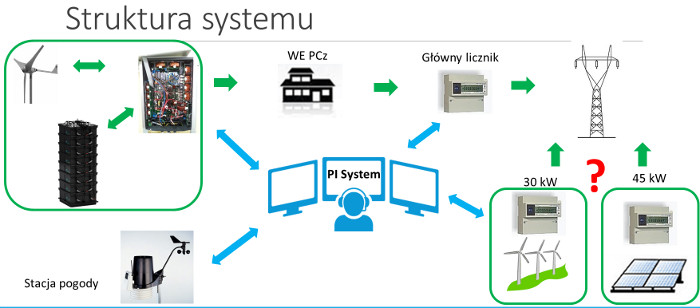

Quality Regulations, IRIES
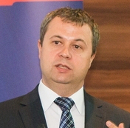 In the year 2016 Polish Distribution System Operators must face a new challenge - new quality regulations introduced by the Polish Energy Regulatory Authority (URE). The objective of those regulations is to improve the dependability of the energy grid. Simultaneous to the plenary session of the Forum there was a workshop dedicated to that topic, led by dr Rafał Gawin. Expert described new obligations that Polish DSOs will have to implement in their strategies and future enterprises. Additionally, he explained and defined issues related to the Operation Instruction for Energy Transmission Network, a new crucial requirement and obligation for the Polish DSOs.
In the year 2016 Polish Distribution System Operators must face a new challenge - new quality regulations introduced by the Polish Energy Regulatory Authority (URE). The objective of those regulations is to improve the dependability of the energy grid. Simultaneous to the plenary session of the Forum there was a workshop dedicated to that topic, led by dr Rafał Gawin. Expert described new obligations that Polish DSOs will have to implement in their strategies and future enterprises. Additionally, he explained and defined issues related to the Operation Instruction for Energy Transmission Network, a new crucial requirement and obligation for the Polish DSOs.Internet of Things - integration of IT and OT worlds.
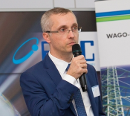 Undoubtedly, the novelty for this year's edition of the Forum was a collaborated presentation prepared by companies: SAP, OSIsoft and ESRI Polska on the concept which is fairly new on the Polish market - Internet of Things. IoT allows regular daily equipment to not only collect data, but also process and exchange them with other devices through public net. MarketsandMarkets forecasts that the global Internet of Things in Energy market is expected to grow from USD 7.59 Billion in 2015 to USD 22.34 Billion by 2020, at a Compound Annual Growth Rate (CAGR) of 24.1% during the forecast period. Some analytics estimate that the growth rate might be even bigger - up to 26% by in the next 4 years. The major forces driving the IoT market are development of cheaper and smarter high speed networking technologies, and rising adoption of cloud platforms across industry verticals. These changes apply also to the Polish market. The implementation of "smart" technology and solutions forces the market to invest in digital transformation of the industry - including IoT.
Undoubtedly, the novelty for this year's edition of the Forum was a collaborated presentation prepared by companies: SAP, OSIsoft and ESRI Polska on the concept which is fairly new on the Polish market - Internet of Things. IoT allows regular daily equipment to not only collect data, but also process and exchange them with other devices through public net. MarketsandMarkets forecasts that the global Internet of Things in Energy market is expected to grow from USD 7.59 Billion in 2015 to USD 22.34 Billion by 2020, at a Compound Annual Growth Rate (CAGR) of 24.1% during the forecast period. Some analytics estimate that the growth rate might be even bigger - up to 26% by in the next 4 years. The major forces driving the IoT market are development of cheaper and smarter high speed networking technologies, and rising adoption of cloud platforms across industry verticals. These changes apply also to the Polish market. The implementation of "smart" technology and solutions forces the market to invest in digital transformation of the industry - including IoT.The topics of innovations and new solutions in IT and OT, concentrating dispersed data in systems and operational processes, providing information in real-time, delivering greater value into the business enterprise, were discussed by: Filip Kowalski from SAP, Krzysztof Walczuk - Executive Account Manager, Poland and Ukraine from OSIsoft and Krzysztof Borkowski, Executive Manager for Infrastructure and Transportation, Esri Polska. As underlined by the experts - in relation to the energy industry - Internet of Things will be mainly involved in integration of production and distribution capabilities with the "smart" solutions of data concentration and analysis. This in return will improve the operational effectiveness of companies. The complete solution based on the PI system - SAP HANA and ESRI visual and analytical platform - providing the the ability to collect, analyze, visualize and share large amounts of high-fidelity, time-series data from multiple sources to people and systems across all operations.
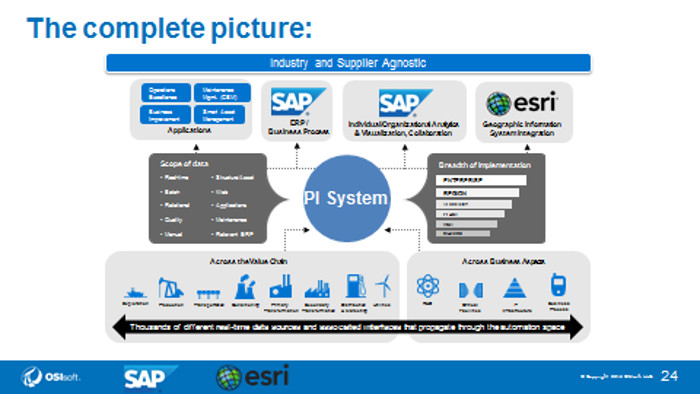

EDF Renewable Energy Data Warehouse Project- EDF Inc.
Last but certainly not least was the presentation by KPIT representatives in a form of video-conference from the United States. KPIT is a global technology company specializing in providing IT Consulting and Product Engineering solutions and services to Automotive, Manufacturing, Energy & Utilities and Life Sciences companies. KPIT designed and created "smart" infrastructure for EDF Renewable Inc. - details of that project can be found in the attached video file.
I would like to thank everyone for their time, support and dedication for the event. It was a privilege to have you all join us for this year's VI edition. From the opinions gathered amongst the participants, it was a good investment of their time and a possibility to broaden knowledge, exchange experiences, meet interesting people. We hope that it will encourage you to cooperate with us again in the future, during the VII edition of the conference - on 8th of June 2017, in Warsaw.
Maria Przekopowska
Managing Director
CBE Polska
This article has been prepared on the basis of lectures and materials from the 6th edition of "Smart Communications & Technology Forum", held on 16th June 2016, organized by CBE Polska. PRIME Alliance was the General Partner of the Forum. Strategic Partners were: OSIsoft, Esri Polska, SAP, NETINIUM. Our Exhibitors WAGO ELWAG Sp. z o.o. and PSI Polska Sp. z o.o. demonstrated their products and services. Honorary Patronage provided by: SEDC - Smart Energy Demand Coalition, ČTPSG - Česká technologická platforma Smart Grid, Urząd Komunikacji Elektronicznej (UKE), Instytut Łączności PIB, Polska Izba Radiodyfuzji Cyfrowej (PIRC), Stowarzyszenie Inżynierów Telekomunikacji (SIT), Polska Izba Komunikacji Elektronicznej (PIKE), Polska Izba Informatyki i Telekomunikacji (PIIT), Naczelna Organizacja Techniczna (NOT), Smart Power Grids - Polska, Instytut Tele-i Radiotechniczny, Polskie Towarzystwo informatyczne- PTI, Stowarzyszenie Elektryków Polskich, Portal Biznes.pl, GLOBE-net, Bulgarian Biomass Association, Portal Energetyka, Energia i my, Energetyka Wodna, Stowarzyszenie Polskich Mediów, Świat Elit, ekorynek.com, Pomiar Serwis Sp. z o.o. oraz Portal Energetykon. Moreover, the conference was held in cooperation with: PTPIREE, Energa Operator, FORTUM, Elering AS, Eandis, KPIT. Translation delivered by Bireta.































































































































































































































































